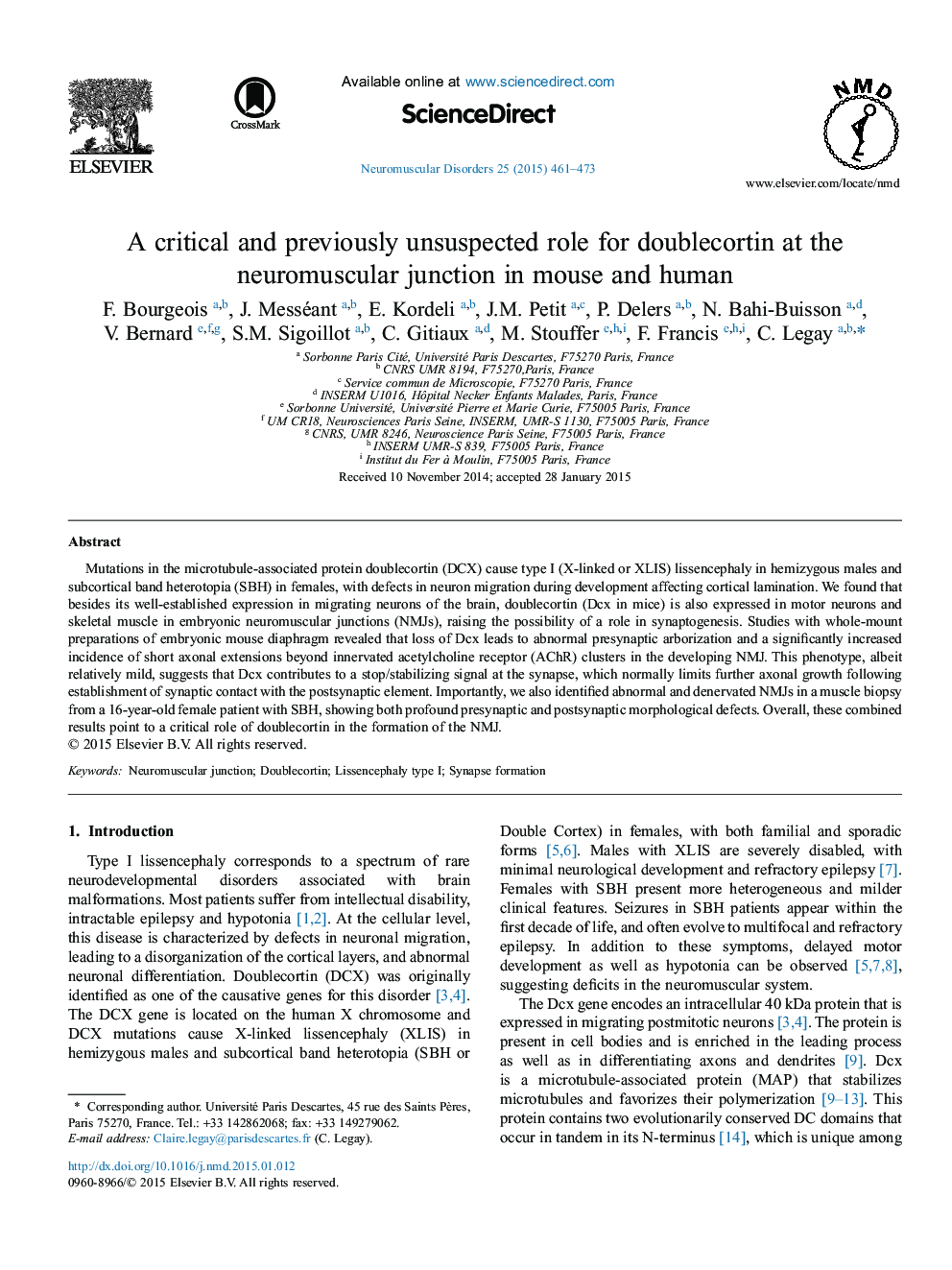| Article ID | Journal | Published Year | Pages | File Type |
|---|---|---|---|---|
| 6041315 | Neuromuscular Disorders | 2015 | 13 Pages |
â¢We search for doublecortin expression in the motor system in mice.â¢We found that doublecortin is expressed in motor neurons and muscle.â¢Defects in neuromuscular junction formation were observed in mutant mice.â¢We report the case of a patient with a doublecortin mutation.â¢In this patient, neuromuscular junctions are abnormal.
Mutations in the microtubule-associated protein doublecortin (DCX) cause type I (X-linked or XLIS) lissencephaly in hemizygous males and subcortical band heterotopia (SBH) in females, with defects in neuron migration during development affecting cortical lamination. We found that besides its well-established expression in migrating neurons of the brain, doublecortin (Dcx in mice) is also expressed in motor neurons and skeletal muscle in embryonic neuromuscular junctions (NMJs), raising the possibility of a role in synaptogenesis. Studies with whole-mount preparations of embryonic mouse diaphragm revealed that loss of Dcx leads to abnormal presynaptic arborization and a significantly increased incidence of short axonal extensions beyond innervated acetylcholine receptor (AChR) clusters in the developing NMJ. This phenotype, albeit relatively mild, suggests that Dcx contributes to a stop/stabilizing signal at the synapse, which normally limits further axonal growth following establishment of synaptic contact with the postsynaptic element. Importantly, we also identified abnormal and denervated NMJs in a muscle biopsy from a 16-year-old female patient with SBH, showing both profound presynaptic and postsynaptic morphological defects. Overall, these combined results point to a critical role of doublecortin in the formation of the NMJ.
